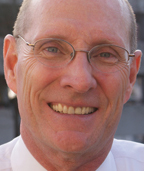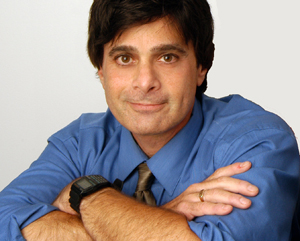While much of the world struggles to understand the implications of regenerative medicine, Evan Snyder, M.D., Ph.D., may have it figured out.
 |
Tom O’Connor |
One of the leading experts in the country in regenerative medicine, Dr. Snyder was at UNMC last week to deliver the 25th Latta Lecture. The lecture, sponsored by the College of Medicine Alumni Association, honors John Latta, M.D., former chairman of anatomy.
“There’s nothing unique about stem cell biology,” Dr. Snyder said. “Repair goes on every single minute of our lives. Our bloodstream turns over every 120 days. It’s nature at work.”
Regenerative medicine represents a paradigm shift in medicine, he said. “Medicine has been – you have a disease, you try to stop it in its tracks. You use an antibiotic to stop a bacteria infection. a pill to treat high blood pressure.
“Regenerative medicine says let’s start over and get it right. It’s like rebooting your computer or reseeding your lawn. Sometimes you need to start from scratch.”
Dr. Snyder said regenerative medicine “is probably more natural than any other branch of medicine.”
 |
Evan Snyder, M.D., Ph.D., who presented last week’s Latta Lecture, said regenerative medicine is likely more natural than any other branch of medicine. |
Dr. Snyder foresees a bright future for regenerative medicine. “The low hanging fruit” — protective therapies more so than cell replacement therapies in Parkinson’s disease, spinal cord injuries, stroke, head trauma and pediatric diseases — will be significantly impacted in the next five years.
In the decade after that, Dr. Snyder said, “We’ll be able to I think start replacing some cells that are lost, because we will have a better understanding of how they developed properly to begin with. We’ll be using stem cells to discover new drugs serving as models of ‘diseases in a dish.’ We’ll be able to make organs outside the body.”
Sounds good to me. I’m a big believer in mulligans.